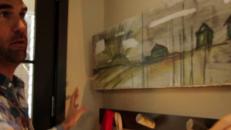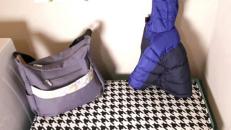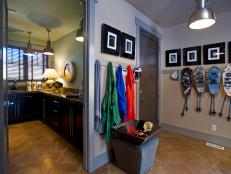Mudroom Flooring Options

Because mudrooms have the potential — by their very nature — to get so dirty, you’ll need to think about what materials can withstand the types of abuse they may have coming their way. Will the space be limited to occasional galoshes or the repeated stomps of boots covered in wet clumps of earth? Think materials that can be easily cleaned, mopped, washed or hosed down when needed.
Floor Mats
Mats soften transitions and provide a visual distinction for certain areas. Consider sandwiching an entry door with floor mats that can trap dirt, dust and pollen before they come into the house. Mats or rugs at different stations within a room can serve as landing spots, and runners can guide or lead one along a well-trod path.
"There is a tendency to put an inexpensive throw rug in a mudroom, because after all, people are just going to wipe their muddy feet on it," says interior designer Molly Quinn. "It may seem that a wool rug is impractical, but look at your other options: A cotton rug stains easily and can only be washed so many times before looking ratty. Sisal absorbs water and stains easily, and can't really be washed. Wool is a good choice because it naturally resists bacteria, mold and moisture, and with regular cleaning will last years longer than a throwaway rug."
Easy-to-Clean Flooring
You'll want flooring made of nonporous surfaces like stone, tile, or sealed wood or concrete, as you may find yourself with a full arsenal of cleaning tools to enlist. "This is a room that gets a high level of traffic, so I recommend a very durable and low-maintenance floor like slate or porcelain tile," says architect Mandy Brown.
Mudroom Design Ideas
See All VideosMoisture-Resistant Flooring
Durable, nonporous flooring is the key to making a solid foundation for this hard-working space. This is a place that may require more cleaning than other areas of your house, so be sure to factor in practicality when choosing the materials to outfit your mudroom.
"I like to use natural materials that are tried and true and unfussy," says Quinn. "A natural stone in a larger tile size and dark color always works well. There are some fantastic porcelain products that provide the look of wood, which I like when you are transitioning to hardwood in adjacent areas and want to keep the floor material consistent in color." Don't forget linoleum, which is easy to clean, cost effective and a natural material that allows you to create some fun patterns.







































